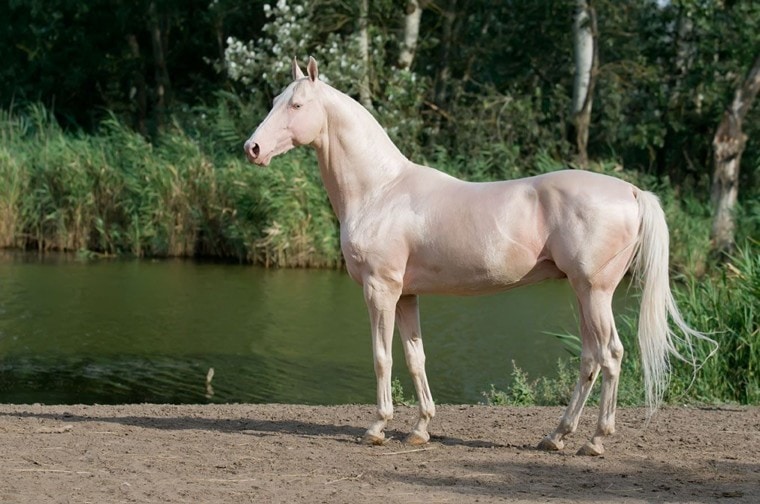There are more than 600 different horse breeds in the world, and each one is unique in its own special way.
However, the exotic horse breeds listed below stand out from other types due to their distinct beauty or appeal. It occasionally might be hair that is curly or have an uncommon tint. Some of the most exotic horse breeds are regarded as exotic because they come from distant lands and are infrequently seen outside of their birthplace. It could be the rarity of a horse breed or some distinctive physical attribute.
Discover ten of the world’s rarest and most distinctive horse breeds by reading on.

First, Akhal-Teke
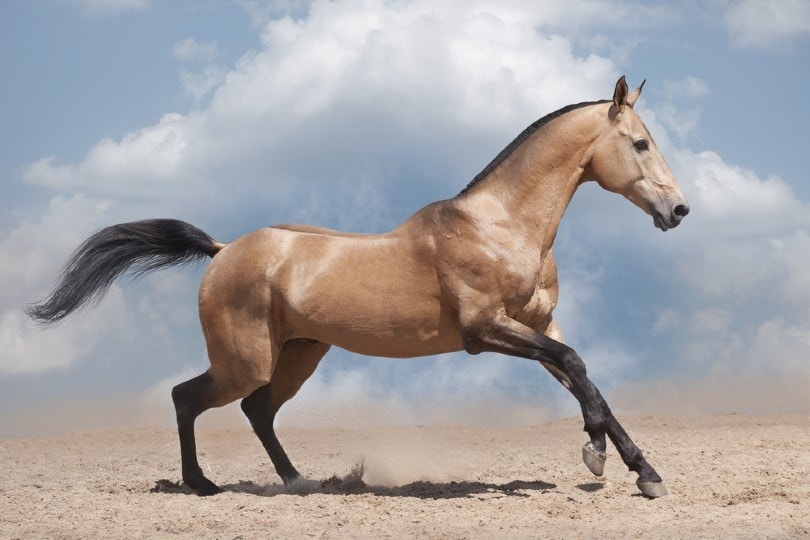
The aforementioned horse with the unusual hue is called the Akhal Teke. While there are breeds that combine a dark coat with contrastive manes and breeds with magnificent blonde coats, the Akhal-Teke possesses a translucent hair shaft that gives it a glittering luster. The Akhal-Teke appears golden in some hues.
The horse is an ancient breed that originated in Turkmenistan and is thought to be over 3,000 years old. The Akhal-Teke breed is now thought to be extinct, with only 6,000 individuals remaining.
The breed, which is prized for its endurance characteristics, has excelled in dressage, showjumping, eventing, and as a racehorse. The breed, nonetheless, comes in first on our list of unusual horses because of its golden shine.
2. Knabstrupper
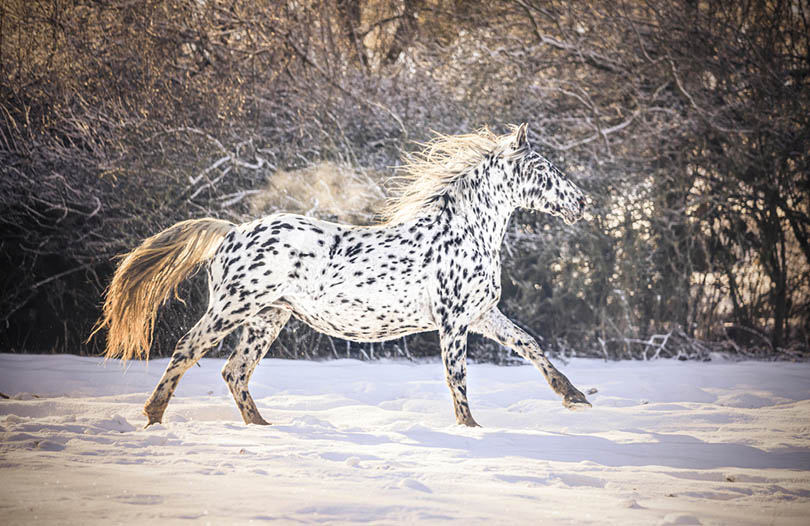
Another breed with a reputation for beauty is the Danish Knabstrupper. Due to a complicated DNA mutation, the Knabstrupper shares leopard markings with the more well-known Appaloosa. The Danish cousin can exhibit the same white colorings as the Appaloosa because they share some genetic heritage.
A colt was born in 1813 as a result of a breeding between a chestnut blanket-spotted mare Major Villars Lunn bought in 1812 and a Fredericksburg stallion. The mare was employed as a carriage horse. The breed was named after the estate where Lunn and his horses resided, and this colt served as its prototype.
The Kansbstrupper is used for recreational rides, instruction, and general riding. It excels in competitions like show jumping, dressage, and eventing and is renowned for its endurance. Its leopard coat indicates that it has been a circus horse and that it formerly served as the Danish army’s cavalry horse, but its conspicuous color made it an easy target.
Gypsy Vanner 3.
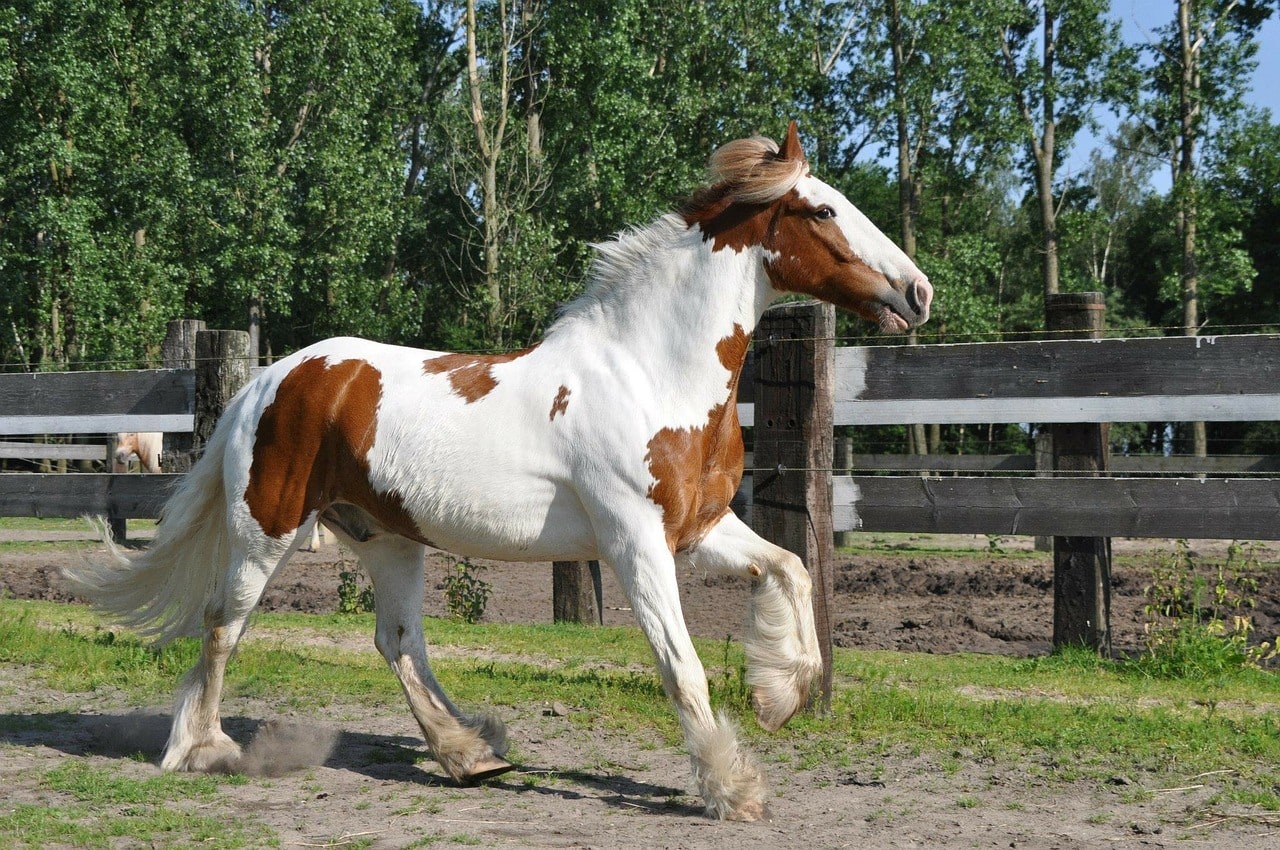
The Gypsy Vanner is a cob-type horse with long flowing mane and tail and feathering around the ankles. Ireland and other parts of the UK, where it first appeared, frequently have it. Its size can vary greatly, ranging from small ponies, which are under 14 hands tall, to classics, which stand between 14 and 15 hands, and grand Vanners, which stand over 15 hands.
In the UK, gypsies and other wanderers bred a horse with the best qualities for pulling their carts or vans. In addition to needing to be strong and capable, the horses also needed to be able to live around the family, be with other animals, and be of a size that would not be too expensive to feed. Along with continuing to be popular in Ireland and the UK, horses have gained popularity in North America.
Although the Vanner still serves its original duty of pulling carts and wagons, its striking appearance has led to its usage in both dressage and pleasure riding.
Bashkir Curly 4.
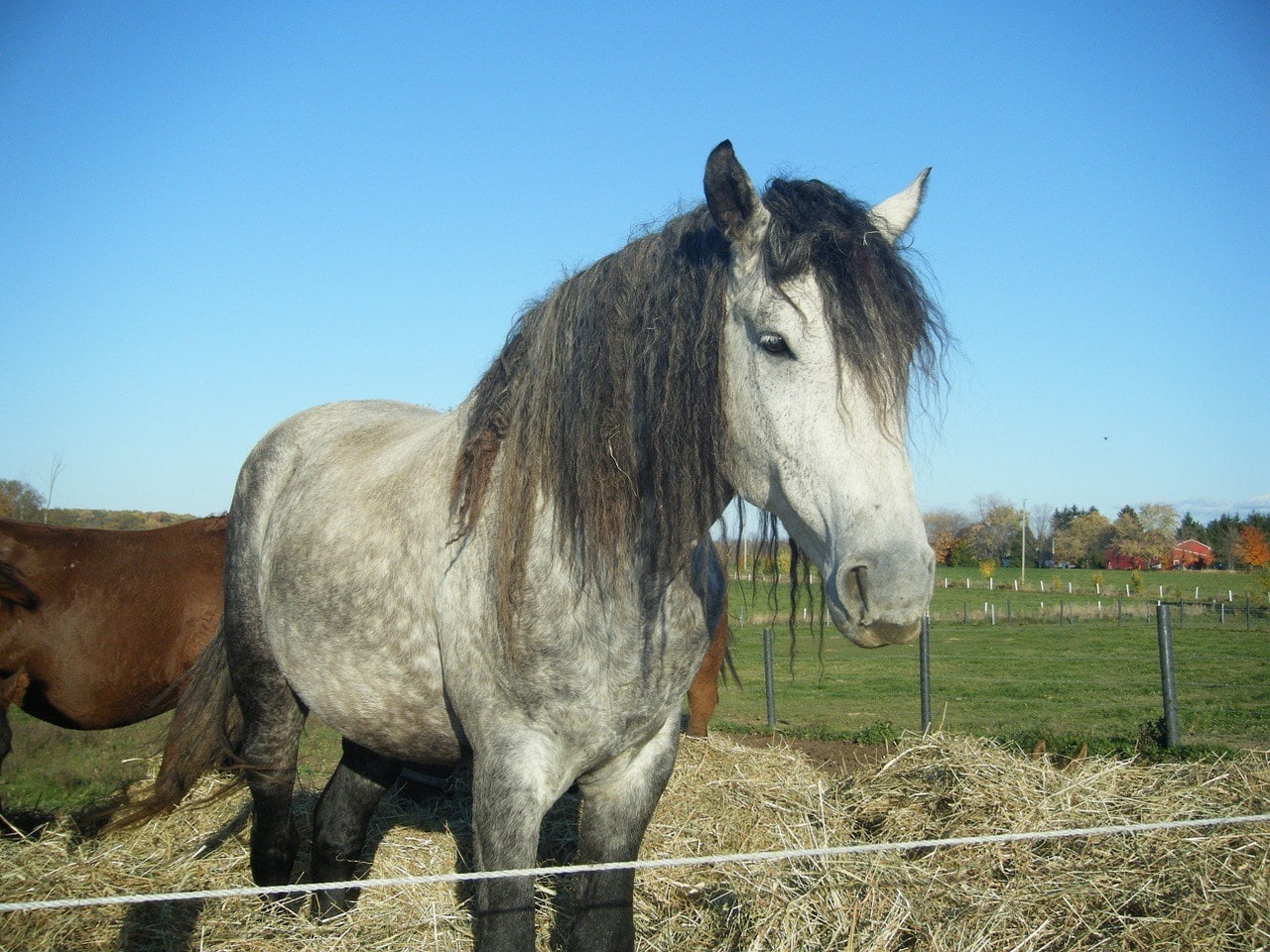
The Bashkir Curly is distinguished by its curly hair, as suggested by the name. The curly gene can have minimal, maximum, or severe expression. This implies that the developing horse might just have curly hair inside its ears and a kinky mane, or it might have extremely curly hair all over its body in the winter and be bald in the summer.
The modern Bashkir Curly horse was developed in the high mountains of Nevada by Peter Damele and his son after they saw and captured three of the breed’s ancestors. They were employed for ranch work, and this herd is the ancestor of all current Curlies.
The Bashkir Curly breed is utilized for Western riding disciplines like eventing, reining, barrel racing, and more. Additionally, it is evident in the dressage arena.
Norse Fjord, number five
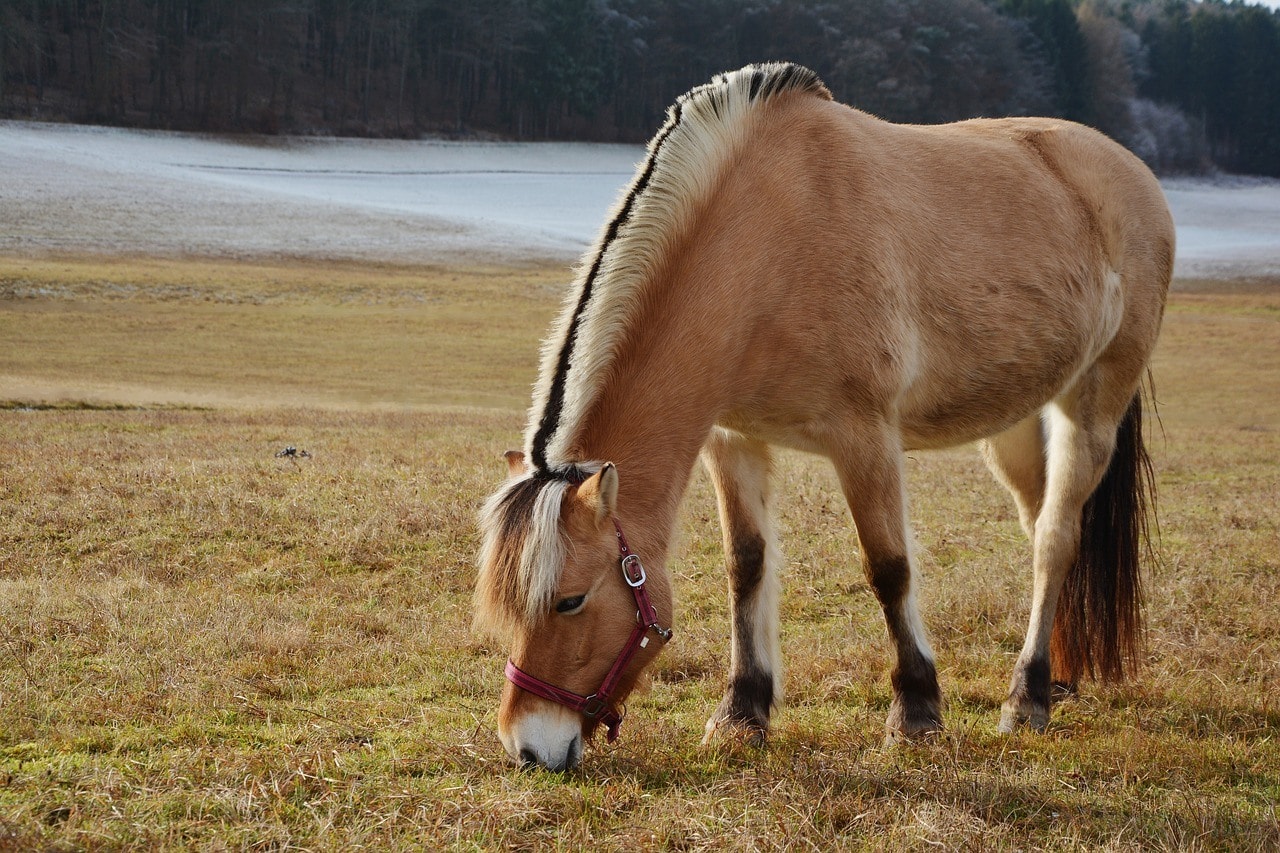
The Norwegian Fjord is one of the oldest breeds still in existence, with an estimated age of over 4,000 years. Although the breed possesses the strength and muscular frame of a draft horse, it is normally smaller than this type of horse and is recognized for being gentle and peaceful. This breed is predominantly brown dun and has a two-tone mane that often has black center hair and white exterior hair.
The breed resembles old cave paintings from 30,000 years ago in appearance, yet archaeological discoveries from the Viking era demonstrate that the Norwegian Vikings selectively bred them. Approximately 6,000 horses are said to be living today.
The Norwegian Fjord is still utilized for drafting and pulling due to its massive size and great strength, but it is also used for dressage and cross-country jumping, as well as for transportation and tourism in Norway.
Friesian 6.
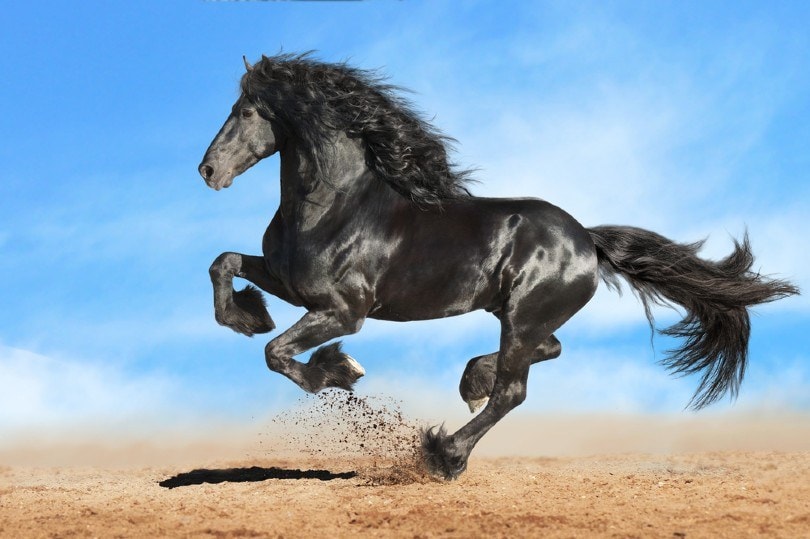
The majority of Friesians are entirely black and lack any sort of white markings. In actuality, the majority of registries let certain markings other than black but reject animals with excessive amounts of white since they think it indicates the horse is not purebred enough. Despite being a popular and well-known breed, they are regarded as being quite uncommon. They have a thick, very long mane and tail that are highly coveted, and they have powerful-looking, muscular bodies.
The Friesian horse is native to the Dutch province of Friesland, and it is said to have descended from the prehistoric Forest Horse. The Romans rode the horse and brought it to England, where a variety of other breeds, including the Shire and Clydesdale, were affected. Surprisingly, the Friesian breed has changed from being regarded as an ugly one to one of the most attractive.
The Friesian is exceptional in several fields. It is utilized both under harness and under saddle, and it excels in dressage competitions.
7. Spanish
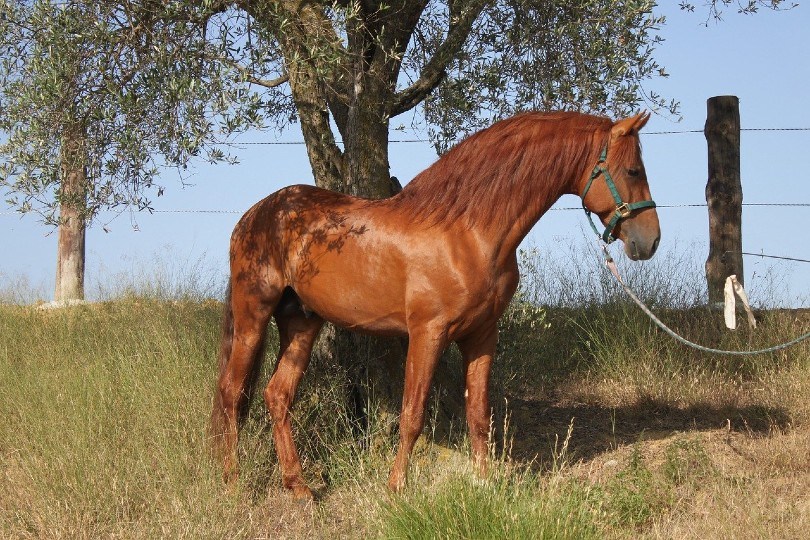
This breed has thick, long manes, just like the Andalusian. They have a baroque aesthetic that is entirely appropriate for their place of origin. The breed continues to be well-liked today despite having influenced many other breeds over the ages. The breed, while popular elsewhere in the world, is still very uncommon in the US.
Since the 15th century, there has been a breed of horse known as the Pure Spanish Horse. It was a beloved and well-used warhorse that belonged to the nobility and has kept its appearance over the years. However, exports were limited until the 1960s, and ever since the limitations were removed, the breed has gained popularity on a global scale. Around 200,000 Andalusian horses are thought to exist worldwide.
The Andalusian is still employed for bullfighting and traditional dressage even if it is no longer a warhorse. It is also widely used for general riding, driving, show jumping, and contemporary dressage.
Arabic 8.
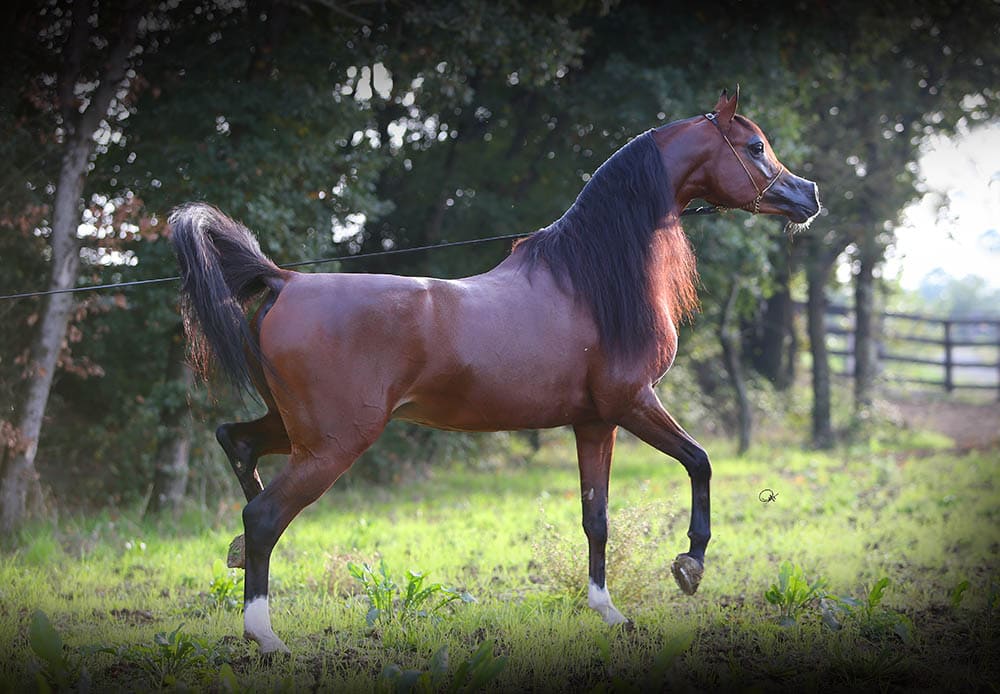
One of the oldest breeds of horses in existence, the warm-blooded Arabian horse is well-known for having beautiful and refined physical characteristics. You will find the physical characteristics of the Arabian lineage in many other horses because it has been utilized to create new breeds and to improve existing breeds throughout the Centuries.
One of the oldest breeds still in existence, the breed dates back to 3,000 BC. The Beduin tribe of the Arabian Peninsula made extensive use of it and is credited with developing the first specimens of this species.
Although the Arabian is regarded as a superb all-arounder, it is known for excelling in long-distance riding and endurance competitions.
Haflinger 9.
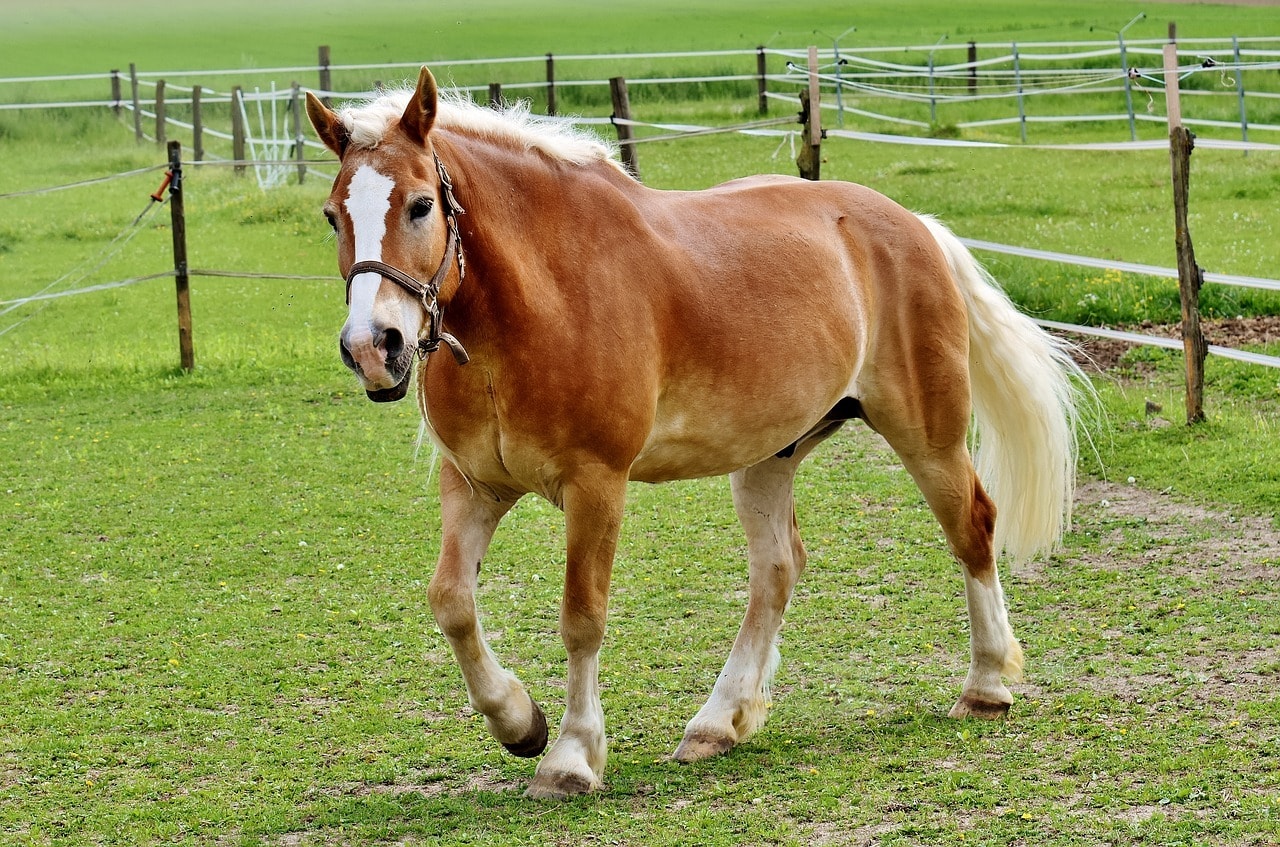
Despite being relatively little horses, Haflingers are well-muscled and have the ideal proportions. They are tough creatures with flaxen, blonde main and tail fur, and a palomino coat. People-oriented and sociable, they value time spent with their handlers. They have a relaxed demeanor.
The Haflinger is an Austrian mountain breed that was once used to transport riders through the mountains during the Middle Ages. Despite being a very tiny breed of horse, they have survived the test of time thanks to their ancestors’ hardiness and fortitude.
Currently, the breed is most frequently utilized in dressage, endurance, vaulting, and therapeutic riding under saddle. They may also be used for some light drafting labor.
Lipizzaner 10.
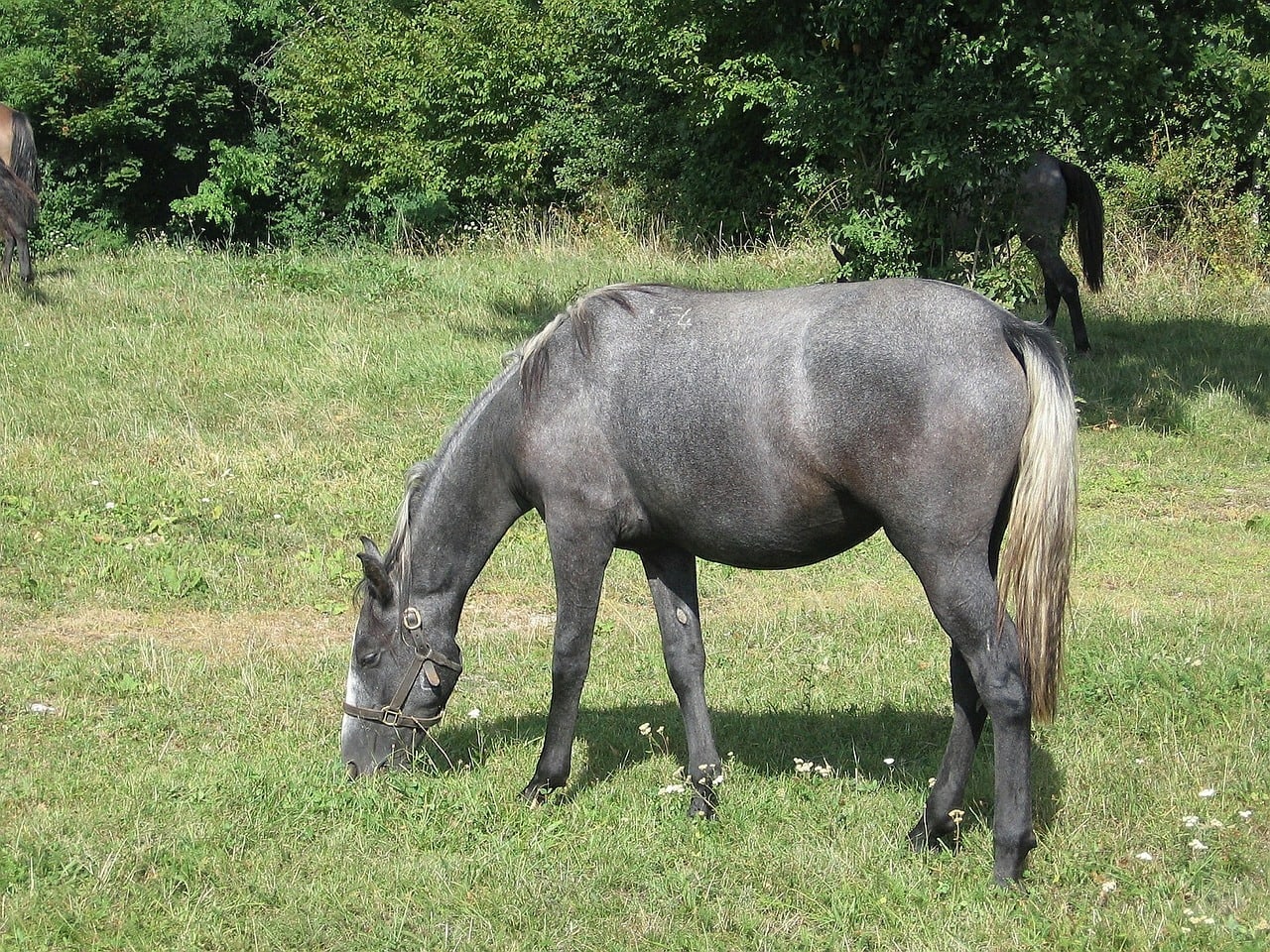
Beautiful white or gray horses of average to large size are known as Lipizzaners. They are actually born black, but as they become older, they turn pale gray. There are other colors, such as black, brown, and bay, although these are quite uncommon. The breed has a tail and mane that are both long and the same color as the coat.
The Hapsburg monarchy established the breed, which underwent extensive selective breeding. They were employed in both the military and riding schools, and the American General George S. Patton’s leadership during World War II is largely responsible for the breed’s survival.
Today, the Lipizzan is used almost exclusively at the Spanish Riding School in Vienna, Austria. It excels at Airs Above the Ground, Haute Ecole dressage, and modern dressage, but the breed is also considered suitable for pleasure riding and general lessons.

exotic breeds of horses
There are more than 600 different horse breeds worldwide, but the ten listed above are some of the most odd and exotic. Some of the breeds make outstanding steads despite their unique characteristics, and they are still employed today for their ability in pulling, exhibiting, and riding.
Horse Related Readings
Credit for the Featured Image: Makarova Viktoria, Shutterstock
